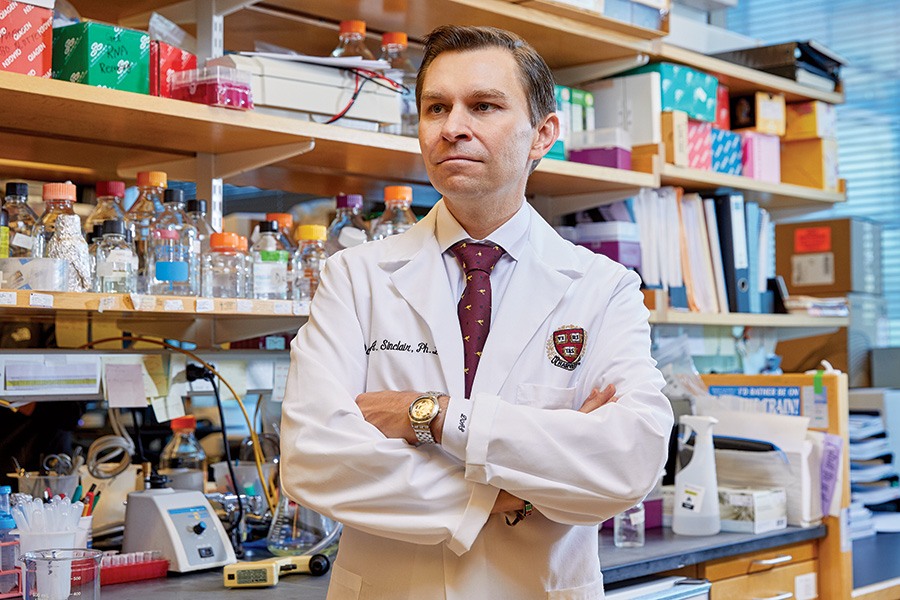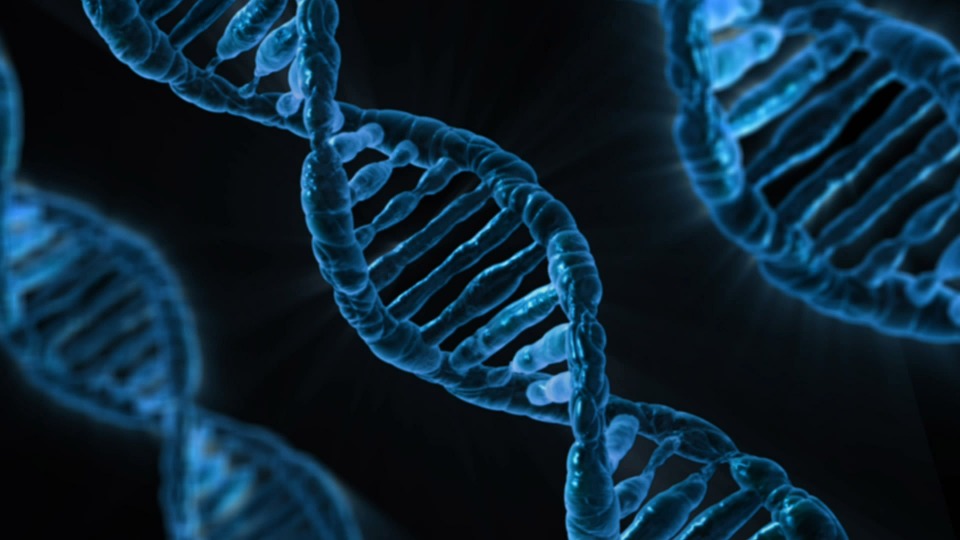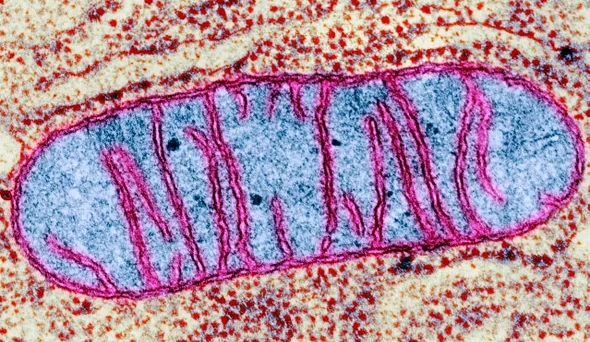Benjamin Button Effect: The Old Mice Rejuvenate In David Sinclair’s Lab
Science • June 9, 2022 • 7min read

David Sinclair believes that people do not die from Alzheimer’s, dementia, or diabetes. But people die from aging- the major cause of all these diseases. His Lab aims to find a cure for aging to be able to prevent all age-induced diseases and even rejuvenate the old organisms.
This huge goal and curiosity helped the scientists in molecular biology at Harvard Medical School grow the old mice young again. This phenomenon is also referred to as the Benjamin Button effect, where chronological aging does not affect a person’s appearance or health. But instead, a person experiences recognizable rejuvenation of body cells while aging gracefully.
Turning the adult cells into stem cells makes it possible for the old body organs to grow young again. Hence, the scientists from Sinclair’s lab used the mechanism of injecting the old mice with specific genes to modify the genetic information of the adult cells, turning them young again.
But the major goal of Sinclair and other scientists in the field of longevity is to see the same results in humans. And they believe that many of us are still in the stage of our lives where we can still see this happen during our lifetime.
To live a healthier and longer life is possible with wise scientific interventions, helping us rewind the aging clock. Here we will discuss how scientists approach this challenge and what promises for a healthy lifespan the future holds for us.
What Is The Benjamin Button Disease?
Benjamin Button is a well-known character in F. Scott Fitzgerald’s “The Curious Case of Benjamin Button” short story. Benjamin Button in this story suffered from a rare genetic condition where he was aging reversed.
This rare genetic condition is also known as Progeria (also called Benjamin Button disease) when the newborn baby grows prematurely and rapidly. Only 1 out of 4 million children is born with Progeria in the world. At the age of 10, a child looks like a 50 years old person and may live around 15 years.
While there is still no cure for this rare condition, scientists are constantly looking for ways to slow down the premature aging process of children with this health issue.

The term “Benjamin Button effect” is used to describe the recognizable rejuvenation of a person, yet still maintaining the natural appearance of youthfulness. Numerous companies develop mechanisms that may help people look younger again, but these mechanisms may not be effective to treat the very core of aging.
Using one of the eminent scientific discoveries known as Yamanaka factors, Sinclair demonstrated the real-life Benjamin Button effect on aging mice. David Sinclair and his team of scientists achieved the goal of reviving the vision of old mice earlier in 2020. In the same way, his lab continued to rejuvenate the damaged brain cells and muscles of old mice aiming to reverse the aging of the entire body of these rodents.
Yamanaka Factors. Growing Old Cells Young Again
Cells have genetic information and while in the embryonic state they develop to become different body cells and parts. Most of these cells are present during the embryonic period and are called stem cells. Stem cells provide new cells for the body and replace damaged cells as the body grows. These cells can turn into all kinds of body cells.
Stem cells exist in vast amounts in the body of a newborn baby. But during life, a person loses these stem cells after they turn into various cells throughout the body. And the body meets challenges to rebuild new body cells in the condition of a poor stem cell pool. Here is when a person encounters inflammations, neurodegenerative diseases, and premature aging.
Dr. Shinya Yamanka studied the potency of stem cells in 2006 and the discovery won him a Nobel Prize in 2007. The findings once again asserted the pluripotency of stem cells. This means that stem cells can read the genetic information of the exact body cells and be reborn into specific body tissues.
Transcription factors are proteins the overexpression of which triggers the induction of somatic cells to become pluripotent stem cells. Dr. Yamanaka and his teams used the 4 transcription factors- Sox2, Oct3/4, Klf4, and c-Myc to reprogram the somatic cells and create artificially derived pluripotent stem cells.
These transcription factors, later called “Yamanaka factors” are highly expressed in pluripotent embryonic stem cells. The stem cells collected via the overexpression of Yamanaka factors lose their original genetic information, that is they “forget” being blood, brain, or muscle cells. But once they are injected into a specific area of the body (heart, kidney, etc.) they develop to be that specific somatic cell.

The usage of these pluripotent stem cells is gaining popularity in the field of longevity science carrying a promising future for living 100 years and beyond in a self-regenerating body.
However, scientists started to have concerns after learning that stem cells can serve as double-edged swords in the organism. This being said, the overexpression of the four transaction factors and alteration of these stem cells triggered cancerous conditions in some mice.
For this reason, Sinclair Lab chose the safer alternative by using only the three of four Yamanaka Factors and adding them to a harmless virus. The virus was injected to act as a carrier for the Yamanaka factors. Once the virus was injected into the damaged site of the eye, the pluripotent genes were switched on.
As a result of this practice, the old mice with degraded eyesight started seeing again. After several years of research, Dr. Sinclair and his team succeeded in rejuvenating the eye cells of old mice. In the same way, as they rejuvenated the muscles and brains of the old rodents, Sinclair’s Lab aims to rejuvenate the whole body of the mice.

These studies demonstrate that our genome still archives information about our youthfulness. But the reason our cells forget how to function according to the type of cells they are is that the “hard disks” containing this information get scratched over time.
Yet, using the Yamanaka factors as a tool to inject pluripotent stem cells, Sinclair believes to restore the information and remind the cells how to read it to restore themselves even if we are already old and have health conditions.
Nevertheless, the stem cells injected into mice do not last forever, and as Sinclair says: “It’s as permanent as aging is. It’s a reset, and then we see the mice age out again, so then we just repeat the process”. Yet, Dr. Sinclair believes they found the key to rewinding the aging clock. And as in the story of Benjamin Button, we will be able to age backward maintaining our natural youthfulness.
The Future Of Reverse Aging Science
Imagine getting compliments for not corresponding to your chronological age. And thanking not only your lifestyle patterns, diet, or cosmetologist, but the science that found the cure for aging- the cause of Alzheimer’s, Parkinson’s, diabetes, dementia, and chronic inflammation.
David Sinclair believes that the same science that rejuvenated the mice will do the same for humans. As for now, the human trials are in the early stages, and they may take years to be finished. And then we will be able to reverse our biological clocks.
“We believe we have found the master control switch, a way to rewind the clock,” Sinclair says. “The body will then wake up, remember how to behave, remember how to regenerate, and will be young again, even if you’re already old and have an illness”.
Meanwhile, we can pursue several lifestyle patterns to stay younger and healthier for a long time to enjoy the effects of these studies. Following Sinclair’s lifestyle example of how to slow down aging, we will be able to add extra years to our lifespan.
Optimistically closing this article, we, as David Sinclair, believe that “we can duplicate this very fundamental process that exists in everything from a bat to a sheep to a whale to a human. We’ve done it in a mouse. There’s no reason I can think of why it shouldn’t work in a person, too.”



